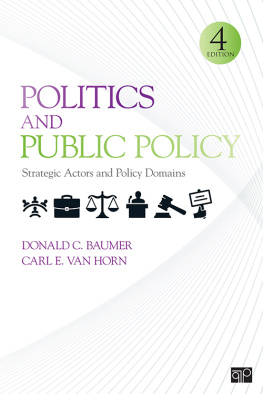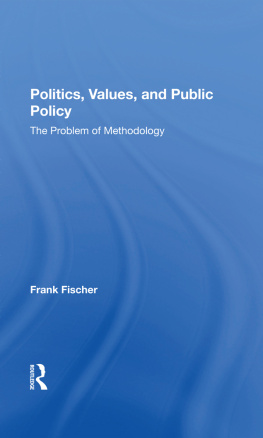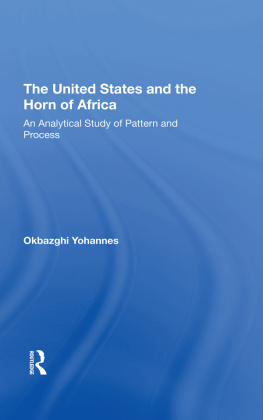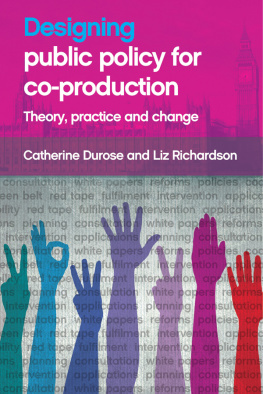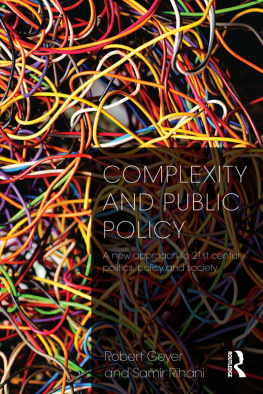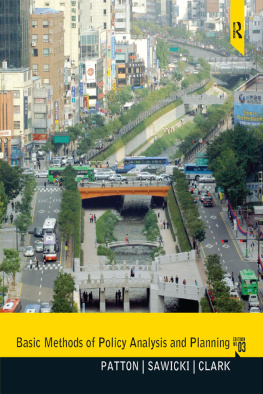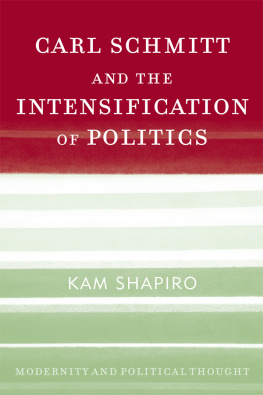Copyright 2014 by CQ Press, an Imprint of SAGE Publications, Inc. CQ Press is a registered trademark of Congressional Quarterly Inc.
All rights reserved. No part of this book may be reproduced or utilized in any form or by any means, electronic or mechanical, including photocopying, recording, or by any information storage and retrieval system, without permission in writing from the publisher.
Printed in the United States of America
A catalog record of this book is available from the Library of Congress.
ISBN 978-1-4522-2017-8
This book is printed on acid-free paper.
13 14 15 16 10 9 8 7 6 5 4 3 2 1
FOR INFORMATION:
CQ Press
An Imprint of SAGE Publications, Inc.
2455 Teller Road
Thousand Oaks, California 91320
E-mail: order@sagepub.com
SAGE Publications Ltd.
1 Olivers Yard
55 City Road
London EC1Y 1SP
United Kingdom
SAGE Publications India Pvt. Ltd.
B 1/I 1 Mohan Cooperative Industrial Area
Mathura Road, New Delhi 110 044
India
SAGE Publications Asia-Pacific Pte. Ltd.
3 Church Street
#10-04 Samsung Hub
Singapore 049483
Acquisitions Editor: Charisse Kiino
Production Editor: Laura Barrett
Copy Editor: Jim Kelly
Typesetter: C&M Digitals (P) Ltd.
Proofreader: Sarah J. Duffy
Indexer: Kathy Paparchontis
Cover Designer: Anupama Krishan
Marketing Manager: Erica DeLuca
Permissions Editor: Jennifer Barron
PREFACE
W hy do policymakers select certain problems for attention and ignore others? Why do some policy ideas fail and others succeed? In addition to the president, Congress, and the Supreme Court, what other institutions are influential in shaping public policies? How do policymakers design and implement policies? How do those policies ultimately influence the nation? Providing answers to these and other questions is the focus of this book. The practice of politics and policymaking is complicated, involving thousands of people in government institutions and the private sector. Although each public law and public policy has a unique history, Politics and Public Policy is designed to help students understand the larger patterns of the policymaking process.
In Politics and Public Policy, we go beyond conventional analyses that focus narrowly and exclusively on presidents and members of Congress to offer a more comprehensive and realistic view of policymaking in the United States. The judicial rulings, regulations, administrative rulings, and corporate decisions of judges, bureaucrats, corporate officials, journalists, and voters determine government policy and its results just as much as the decisions of legislators and chief executives. Moreover, state and local governments play an increasingly important and expanding role in the design and conduct of public policies.
In Politics and Public Policy, we use a unique framework to examine the policymakers and institutions that make public policy. Differences in the politics within these arenas produce different policies and outcomes. To help students understand such variations, we describe six domains of public policy:
1. Boardroom politics: decisions by business leaders and professionals that have important public consequences
2. Bureaucratic politics: rulemaking and adjudication by administrators who consider the interests of clients, legislators, and the chief executive, in addition to using their own professional judgment
3. Cloakroom politics: lawmaking by legislators who weigh the competing demands of constituents, interest groups, and presidents or governors
4. Chief executive politics: decision making dominated by presidents, governors, mayors, and their advisers
5. Courtroom politics: court orders by judges, influenced by the Constitution, laws, and competing adversaries in judicial proceedings
6. Living room politics: the consequences of public opinions expressed by and through grassroots movements, political activists, voters, and social and mass media
We prefer the policy domain approach to the traditional policy process approach, with its focus on the stages of agenda setting, policy formulation, implementation, and evaluation. However, the two approaches are not incompatible. Although this book was designed to stand on its own in public policy and American government courses, many of our colleagues use our book in conjunction with a more traditional policy process text to broaden students perspectives on the politics of policymaking in the United States.
What we offer is a road map for negotiating the twists and turns of the public policy landscape. We hope readers will come away with a better understanding of how policies are made and implemented, who is powerful and who is not and why, and how public policies influence American citizens and the nation. We also hope readers will be better equipped to assess the performance of the nations political institutions and their leaders.
The book integrates discussions of policymaking with a focus on real policies and their effects. How policies are chosen and implemented is important, but so are what is decided and what those decisions mean for citizens and society. Policymakers are often forced to make difficult and unpleasant choices. Tax and budget policies, global warming, natural disasters, terrorism, international conflicts, and a plethora of other problems pose severe tests for political institutions. Understanding more about how institutions process decisions and make policy will help readers better evaluate their leaders performance on the issues that matter most to them.
This fourth edition of Politics and Public Policy incorporates new scholarship, and the entire book has been updated to reflect conflicts and controversies facing political institutions and policy leaders in the early years of the twenty-first century. The first two chapters introduce the actors and institutions that shape policies and the distinctively American context in which public solutions to problems are demanded. These chapters also identify for students some of the normative concerns to which we return in the concluding chapters. In , we apply our unique approach to understanding public policy through the perspective of the six policy domains; each domain has different power centers, different arenas for struggle, different participants, and often different outcomes. After describing and analyzing the policy domains, we turn to more normative and evaluative concerns in chapters 9 and 10. These chapters assess American political institutions and evaluate progress on broad goals of public policy.
We appreciate the support and encouragement we received from many people in the production of this fourth edition of Politics and Public Policy. We especially want to express our gratitude to Professor William Gormley of Georgetown University for the major contributions he made as our coauthor on the first three editions of this book. Because of other obligations, Professor Gormley was not available to join us on the fourth edition.




